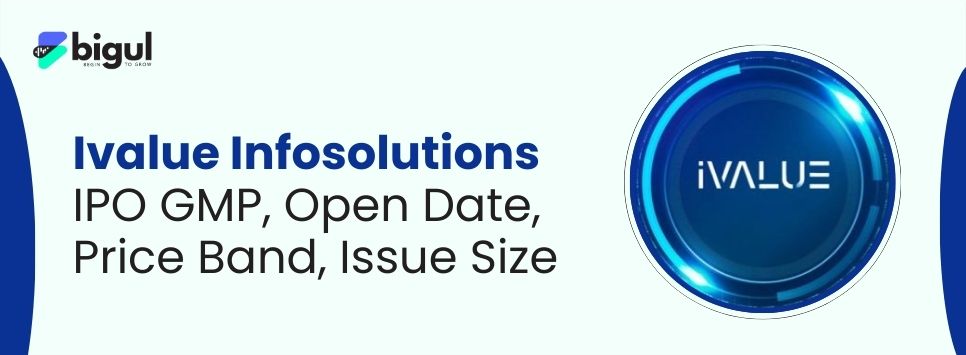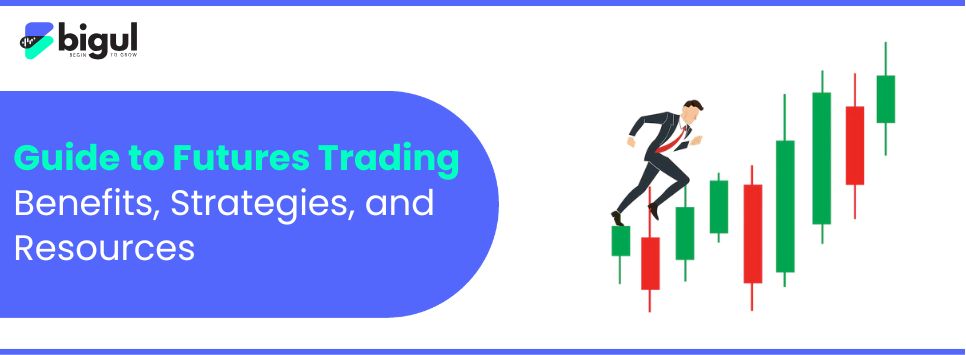Futures trading has become a cornerstone of modern investing in stock market India. Yet, for many newcomers, questions like “what is futures trading?” and “how does futures trading work?” loom large. At its core, “what is futures trading” refers to agreements to buy or sell an underlying asset, such as Nifty futures or Bank Nifty futures, at a specified price on a future date. This form of futures trading falls under derivatives trading, enabling you to participate in price movements without owning the actual stocks. By booking gains or hedging losses in advance, traders can leverage small margins to control large contract sizes, making futures trading both powerful and, if misused, risky.
In this comprehensive guide, we will delve into “what is futures trading” to ensure clarity, explain “how does futures trading work” demystify its mechanics, and provide step-by-step instructions on “how to do futures trading”. Along the way, you will discover the Benefits of Futures Trading, explore proven futures trading strategies, and learn from resources on futures and options trading for beginners. Whether your goal is hedging or speculation, understanding futures trading is important.
Also Read | How to Create Zero-Risk Strategies in F&O
Understanding Futures Trading in the Indian Stock Market: A Beginner's Explanation
When asking “what is futures trading?”, think of it as a promise: you agree today on the price of an asset for a future date. For example, if the Nifty futures contract trades at 18,000 points today for delivery three months later, you lock in today’s price, regardless of where the actual Nifty index moves. This definition of “what is futures trading” emphasises price certainty and risk transfer. Unlike stock ownership, which requires full payment upfront, futures trading demands only a fraction of the contract value, known as margin, allowing efficient use of capital.
Key components of “what is futures trading” include:
-
Underlying Asset: The instrument being traded (indices, commodities, currencies).
-
Contract Size: Standardised lot sizes for uniformity (e.g., one Nifty futures lot equals 50 units of the Nifty index).
-
Expiry Date: Specific future date when the contract expires.
-
Margin Requirements: Initial and maintenance margins set by exchanges.
By explaining “what is futures trading” in these terms, you can appreciate how it fits alongside traditional equity trading in the stock market in India.
Key Benefits of Futures Trading for Beginners in India’s Derivatives Market
Understanding the Benefits of Futures Trading helps you gauge why this segment is so vital:
-
Leverage and Capital Efficiency: One of the top Benefits of Futures Trading is the ability to control large positions with small capital outlay. You need only a margin deposit, freeing the rest of your funds for other pursuits or trades.
-
Hedging and Risk Management: Investors use futures trading to offset potential losses. For instance, if you hold a substantial equity portfolio, shorting Nifty futures can shield you against market downturns.
-
Price Discovery and Transparency: One of the major benefit of futures trading is real time signals and superior transperncey.
Other advantages include:
-
Liquidity: High volume in popular contracts such as Nifty futures ensures easy entry and exit.
-
Diversification: Access to commodities and currency futures alongside equity futures.
These benefits make futures trading indispensable for both hedgers and speculators in the stock market.
How Does Futures Trading Work: Mechanics Behind Price Movement and Settlement
To truly grasp “how does futures trading work”, consider it a standardized contract exchange facilitated by the exchange’s clearinghouse. The clearinghouse guarantees settlement, minimizing counterparty risk. Here’s how “how does futures trading work” step by step:
-
Initiating a Position: You decide to go long (buy) if you expect prices to rise, or short (sell) if you anticipate a decline.
-
Margin Posting: You deposit an initial margin—a small percentage of the contract’s notional value.
-
Mark-to-Market: Each trading day, profits and losses are settled in cash. This process, known as daily mark-to-market, ensures margins are maintained.
-
Maintenance Margin: If losses exceed a threshold, you receive a margin call to top up your account.
-
Expiry and Settlement: Upon contract expiry, positions are closed out or settled in cash based on the spot price. For Nifty futures, settlement is purely cash-based on the closing index value.
The breakdown of “how does futures trading work” highlights the balance between flexibility and obligation inherent in the futures trading and market. New traders who know “how futures trading works” have an advantage when managing margin accounts and the payment process.
Finally, to see “how does futures trading work” in live market conditions, observe daily contract quotes on the NSE website, which list contract specifications, lot sizes, and expiry details.
Proven Futures Trading Strategies to Maximize Returns and Mitigate Risk
When exploring futures trading strategies, many a times one approach to with the complex models. Below are four key futures trading strategies adapted to Indian stock market
-
Trend-Following: Identify the market direction using moving averages or breakout levels. For example, when Bank Nifty futures break above a 20-day moving average, a long trend-following position may be triggered. This is one mention of futures trading strategies.
-
Spread Trading: Simultaneously buy a near-month contract and sell a far-month contract to profit from changes in the price differential. This strategy capitalizes on convergence or divergence across expiry months.
-
Mean Reversion: Price tends to revert to its historical average. You can short Nifty futures when prices spike beyond one standard deviation and go long when they dip below.
-
Volatility Breakout: Use indicators like Bollinger Bands on Nifty futures charts to enter trades when price breaks out of volatility ranges.
-
Pairs Trading: Trade correlated futures such as Nifty and Bank Nifty based on relative performance—long the outperformer and short the underperformer.
By incorporating these futures trading strategies four times, you can develop a diversified playbook that suits your risk tolerance. Each strategy requires robust risk management, including position sizing and stop-loss orders. Backtesting on historical data will refine entry and exit criteria. In practice, many traders blend multiple futures trading strategies to adapt to changing market regimes.
Also Read | 5 Effective Stock Options Strategies to Manage Risk
Detailed Guide on How to Do Futures Trading: Step-by-Step for New Investors
If you’re still asking “how to do futures trading”, follow this comprehensive roadmap:
-
Define Your Capital and Risk
-
Determine your trading capital and maximum risk per trade (e.g., 1–2% of capital).
-
Choose Your Contracts
-
Select relevant index futures like Nifty futures or sectoral futures such as Bank Nifty.
-
Calculate Margin Requirements
-
Check the exchange’s margin calculator for initial and maintenance margins per contract.
-
Develop Your Trading Plan
-
Outline entry triggers, stop-loss levels, profit targets, and capital allocation.
-
Execute Orders
-
Use market or limit orders via your trading platform. Remember, futures positions require active monitoring due to mark-to-market.
-
Monitor and Adjust
-
Check daily P&L, adjust stop losses, and roll over contracts if you plan to extend positions beyond expiry.
-
Exit or Rollover
-
At the end of the position, either exit or roll your trade into the next contract month to ensure what you owe in margin is met.
Using these steps, you will understand “How to do futures trading” better and gain confidence. Start with simulation and little live trading, making sure you learn at an easy pace.
Integrating Futures and Options: Resources for Futures and Options Trading for Beginners
Combining both segments helps you handle risk more effectively. For those interested in futures and options trading for beginners, the resources below can help you to start your journey
-
Interactive Online Courses: Platforms offering modules on futures and options trading for beginners with live examples of Nifty futures and options spreads.
-
Virtual Trading Simulators: Simulate trades using real market data to practice strategy without risking capital.
-
Community Forums and Webinars: Participate in live question and answer sessions related to futures and options trading for beginners, meant for those just starting out.
Among the many trading resources, newcomers can use these tools to advance from straightforward futures and start handling more advanced options.
Curated List of Best Books for Futures and Options Trading to Expand Your Knowledge
To deepen your understanding, read these best books for futures and options trading:
-
“Options, Futures and Other Derivatives” by John C. Hull – It provides an essential explanation of the main theories behind the derivatives market.
-
“Trading Options Greeks” by Dan Passarelli – Explores how Greek functions apply to options pricing which is vital for anyone analysing futures.
-
“Technical Analysis of the Financial Markets” by John J. Murphy – Comprehensive guide to chart patterns, indicators, and market psychology.
-
“A Complete Guide to the Futures Market” by Jack D. Schwager – Hands-on analysis of futures trading techniques.
-
“Fundamentals of Futures and Options Markets” by John C. Hull – A simplified companion to Hull’s advanced text, ideal for beginners.
These best books for futures and options trading will help you build a strong frame work and ensure you make informed decisions in trading with futures
How to Learn Futures and Options Trading
For aspiring traders wondering “how to learn futures and options trading”, follow these three pillars:
-
Structured Learning Path
-
Choose to learn from a curriculum that covers both futures and options.
-
Hands-On Practice
-
Allocate at least one hour daily to paper trade. Document trades, review outcomes, and refine strategies.
-
Continuous Feedback Loop
-
Get involved in groups or programs with traders, so you can talk about dealings, ask about problems and learn which pitfalls to watch out for.
This method will ensure that you know how to learn futures and options trading, and build confidence.
Common Mistakes in Futures Trading for Beginners and How to Avoid Them
As you delve into futures trading for beginners, stay away from these mistakes
-
Over-Leveraging: Avoid excess margin as it can turn to losses
-
Ignoring Volatility: Trading without accounting for contract volatility can lead to surprise margin calls.
-
Poor Risk Management: Skipping stop-loss orders exposes you to unlimited downside.
-
Lack of Strategy Discipline: Abandoning your plan due to emotions often results in erratic performance.
What you learn from these will help you manage derivatives well and create trading habits that last.
By understanding “what is futures trading”, mastering “how does futures trading work”, and applying proven futures trading strategies, you can leverage the dynamic world of derivatives in stock market India. Use the recommended resources—futures and options trading for beginners, best books for futures and options trading, and structured learning plans—to build your expertise. With diligent practice and sound risk management, futures trading can become a powerful addition to your investing toolkit.
FAQs:
Q1: What is the minimum capital required for futures trading in India?
No matter the contract, you can easily provide the margin for one lot of Nifty futures by starting with Rs50,000 – Rs100,000.
Q2: How much profit can I expect from futures trading?
Profits depend on market moves and leverage.Though traders often seek small gains every day, making a profit consistently needs good planning.
Q3: Can futures trading be used to hedge equity investments?
Absolutely. Various traders short Nifty futures against long equity portfolio to mitigate downside risk.
Q4: Which indicators work best for futures trading strategies?
Popular indicators include moving averages for trend-following, Bollinger Bands for volatility breakouts, and RSI for identifying overbought or oversold conditions.
Q5: How do I handle margin calls and avoid forced liquidation?
Maintain a buffer above maintenance margin, set stop-loss orders preemptively, and monitor positions daily to top up your account as needed.
Also Read
- Best Strategies for Option Selling in the Indian Stock Market
- How AI is Revolutionising Options Trading in 2025








.jpg)
.jpg)
